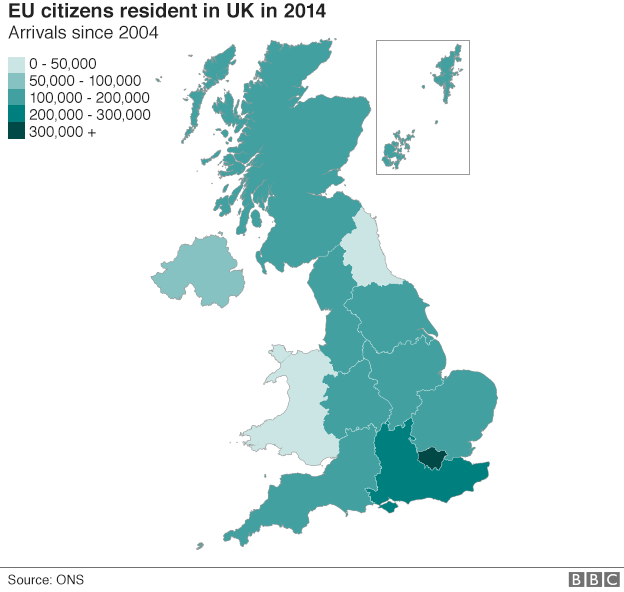Reality Check: How did EU population of UK grow after 2004?
- Published

On Wednesday, National Statistician John Pullinger replied to a Parliamentary question from Conservative MP William Wragg, who had asked how many migrants who had arrived since 2004 are now living in different parts of the UK.
The figures he sent,, external which came from the Annual Population Survey, had all been released previously, but not in this form, and they had not all been added up. The estimate that 1,955,000 EU migrants living in the UK in 2014 had arrived in the previous decade allowed for "two million EU migrants" headlines.
Mr Wragg said that the figures demonstrated that the UK does not have control over its immigration system and should leave the EU.
The figures also showed that at the end of 2014, a total of 1.5 million non-EU migrants who had arrived in the previous decade were living in the UK.
The figures were also broken down into smaller areas, with London having the largest number of EU migrants who arrived between 2004 and 2014, at 633,000, 292,000 of whom were in inner London.
The south-east of England had 214,000, the east of England had 168,000, while the north-west of England had 154,000. Scotland had a total of 134,000.
But these are probably not the figures you are used to seeing for long-term migration. We usually quote the net migration figures, which are based on the numbers of people arriving minus the numbers leaving.
The net migration figures show the flow of long-term migrants in and out of the UK, while the latest figures show the total number of EU migrants in the UK at a particular point.
They tell us that of the approximately three million migrants from the EU currently living in the UK - about two thirds of them arrived in the 10 years since 2004, the year that the Czech Republic, Estonia, Cyprus, Latvia, Lithuania, Hungary, Malta, Poland, Slovakia and Slovenia joined the EU.



- Published22 February 2016
